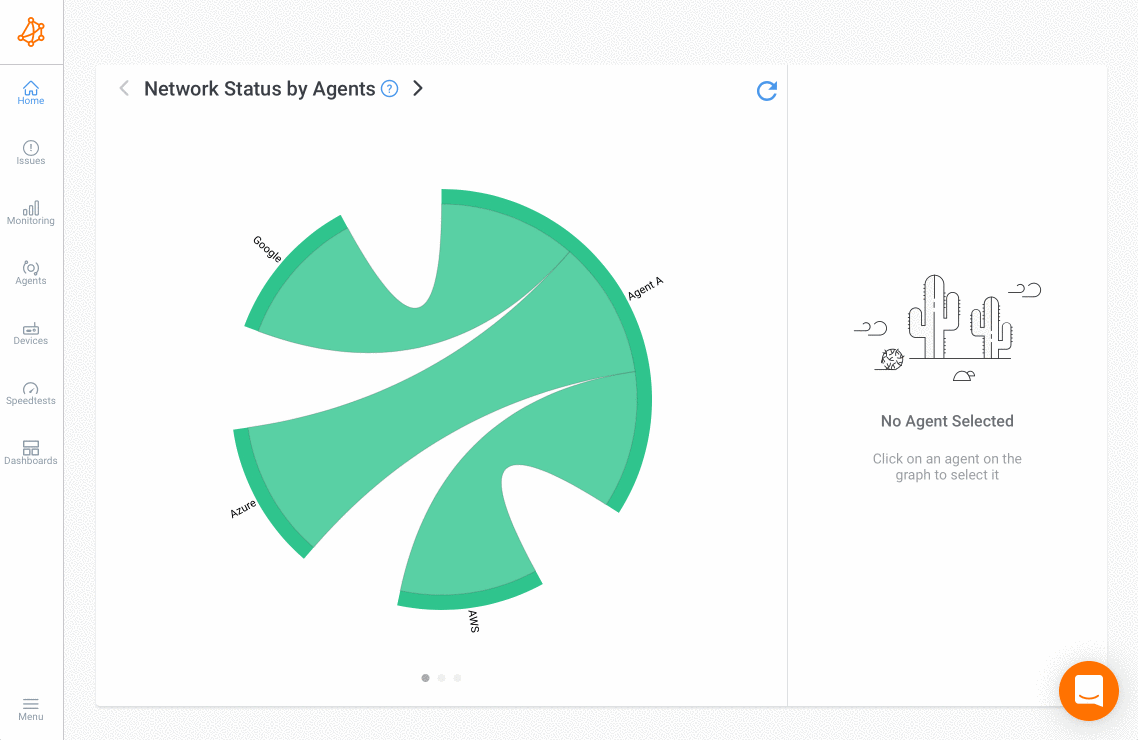Network Device Monitoring
- Why it's important to monitor network devices
- Why fast polling is critical for performance monitoring
What you are going to learn:
Monitoring the performance of networking devices such as firewalls, routers, switches and wifi access points is crucial for IT teams. The Device Monitoring feature inside the Obkio Software is a fast and easy solution to get detailed information about the health of network devices. Used with the end-to-end Network Performance Monitoring feature, it helps IT teams pinpoint issues very quickly.
Obkio's Network Device Monitoring feature can monitor and support almost all SNMP-enabled devices such as:
- Firewalls
- Routers
- Switches
- Wifi access points
- SD-WAN Edge Routers
- and more
Learn more about all the Supported Network Devices
Deploy Monitoring Agents :Before monitoring your network devices, you need to deploy at least one Monitoring Agent (software, hardware or virtual appliance, but not public) to communicate with your network device to measure performance. We always recommend using the Agent closest to the device you want to monitor.
Add Network Devices: Once you’ve installed your monitoring agents, you can then start monitoring your network devices using SNMP by adding the devices inside the Obkio App. The device must support SNMP. We support all versions of SNMP (v1, v2c and v3) and of course, only a read-only access is needed. No technical expertise in SNMP and OID Detection is required. Once you add your devices, Obkio’s network device monitoring feature adapts to any time of equipment.

Ultra-Fast SNMP Polling: Once you’ve added your network devices, Obkio’s Network Device Monitoring features uses Ultra-Fast Polling (every 30 seconds) to provide results that are far more precise than the traditional software polling, which occurs every 5 minutes.
Detect Network Devices Issues: Once you’ve added your network devices, Obkio automatically detect device issues, such as:
- CPU Usage
- Bandwidth Interface Errors
- Interface Errors
- Device Availability
- CRC Errors
- Interface Duplex
If the monitoring agent is not able to send the device monitoring data to the Obkio Cloud, it will store the data in its memory for up to 8 hours. During that time, it will keep trying to upload the data until it is successful. This delay will be reduced if the monitoring agent detects that the host doesn't have enough memory available.
Obkio's Device Monitoring feature has three great advantages when compared to other solutions on the market:
This means that no technical expertise in SNMP, OIDs or MIBs is required. Add the device that you wish to monitor and the software will get what it needs. No servers are required, all the data is sent to the Obkio Cloud and is available inside the App with automatic OID detection included.
With Fast Polling (every 60 seconds) and Ultra-Fast Polling (every 30 seconds), the results are 10x more precise than the traditional software polling, which occurs every 5 minutes. This way, your IT team can quickly detect the short bursts of traffic or CPU utilization that affect network performance and pinpoint the root cause of the performance issue.
There is no need to establish VPNs between a centralized monitoring server and the LANs where the network devices are located. That's because all the polling is done by the agent that is already inside the LAN, measuring the end-to-end network performance.
Learn more in our blog post about Network Device Monitoring to Identify & Troubleshoot Performance Issues.


























